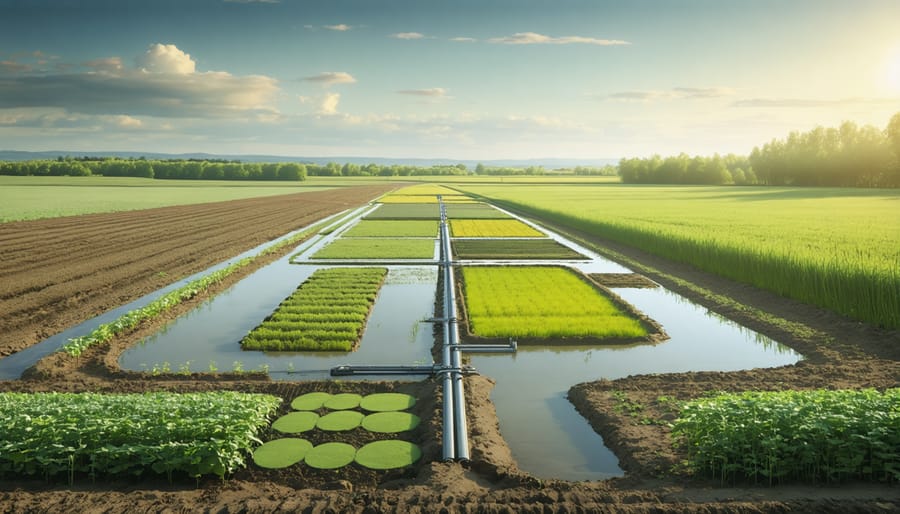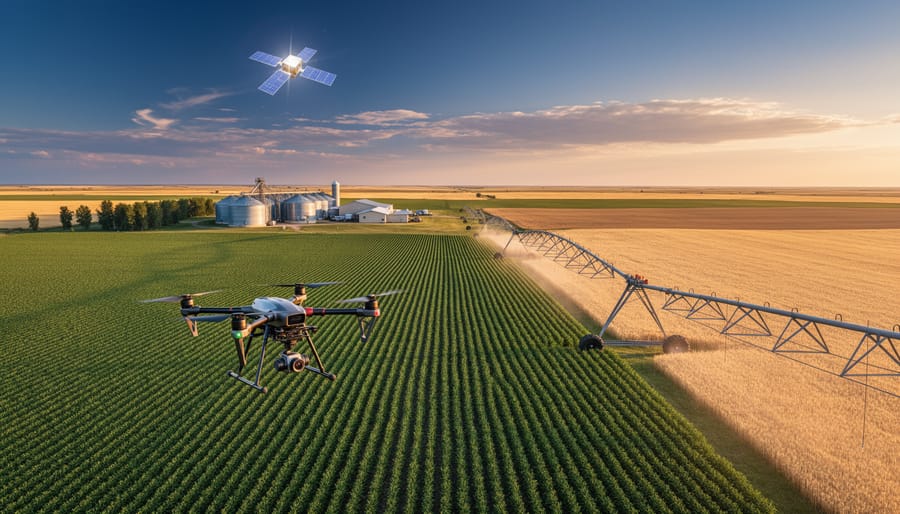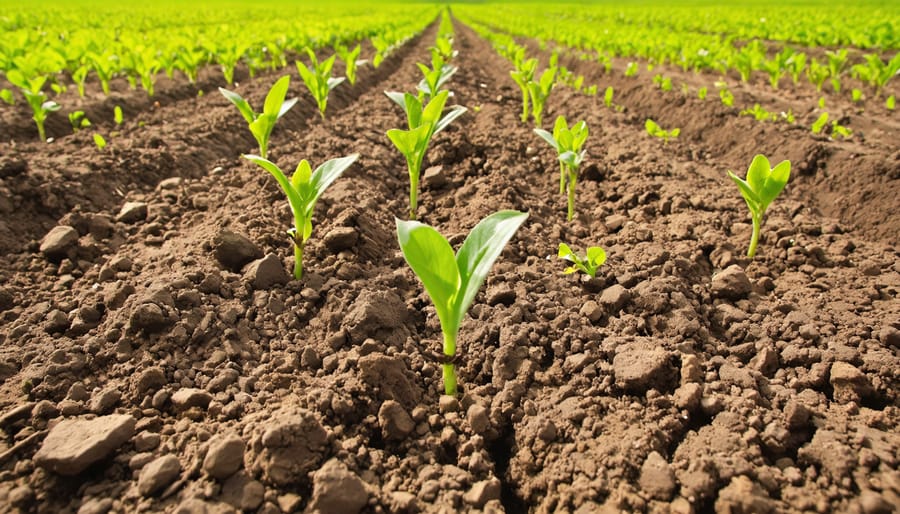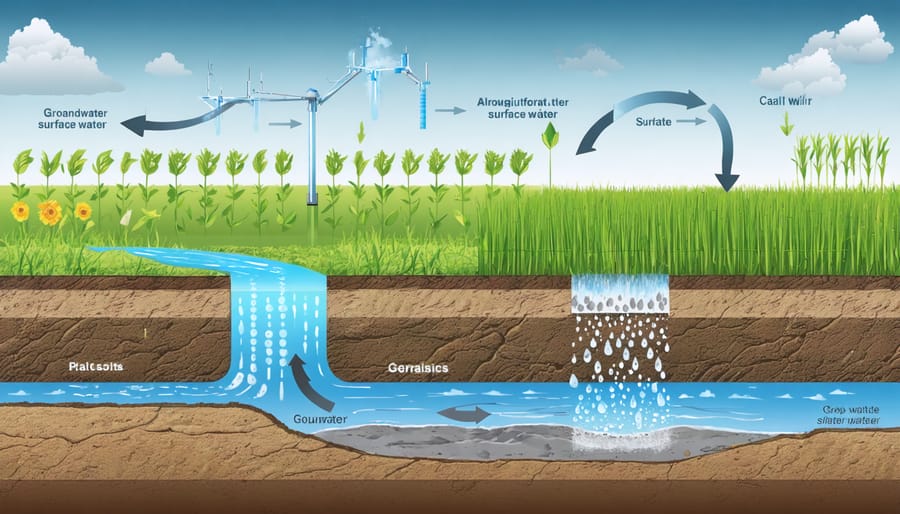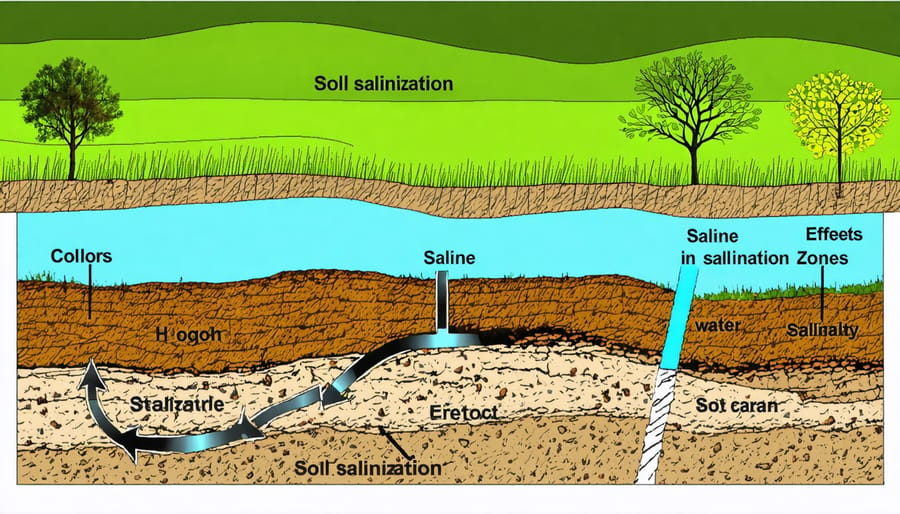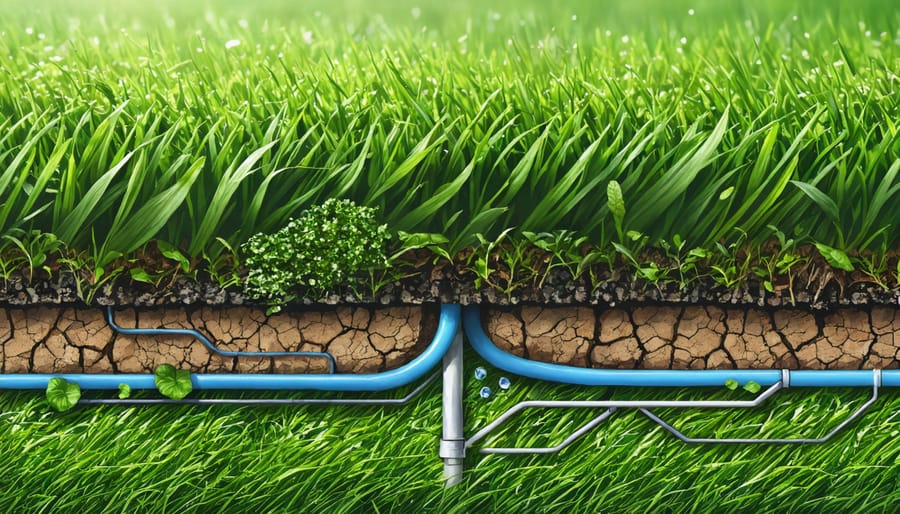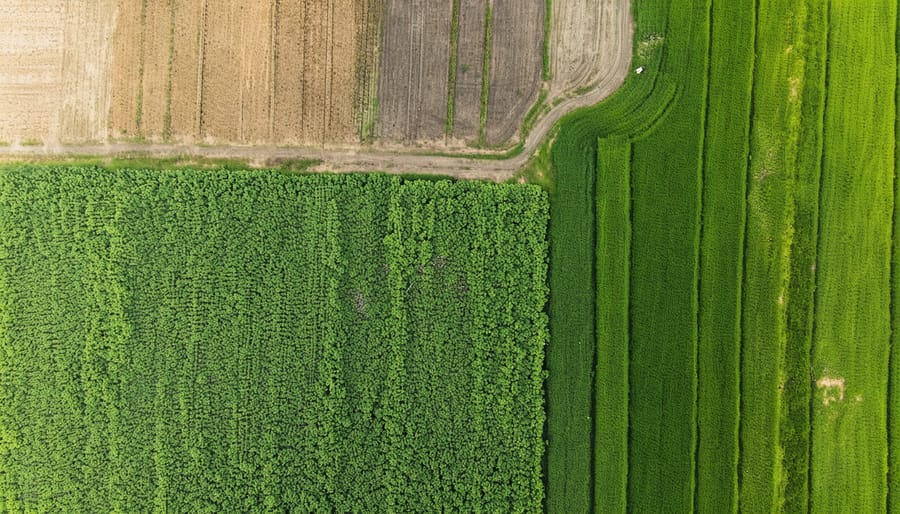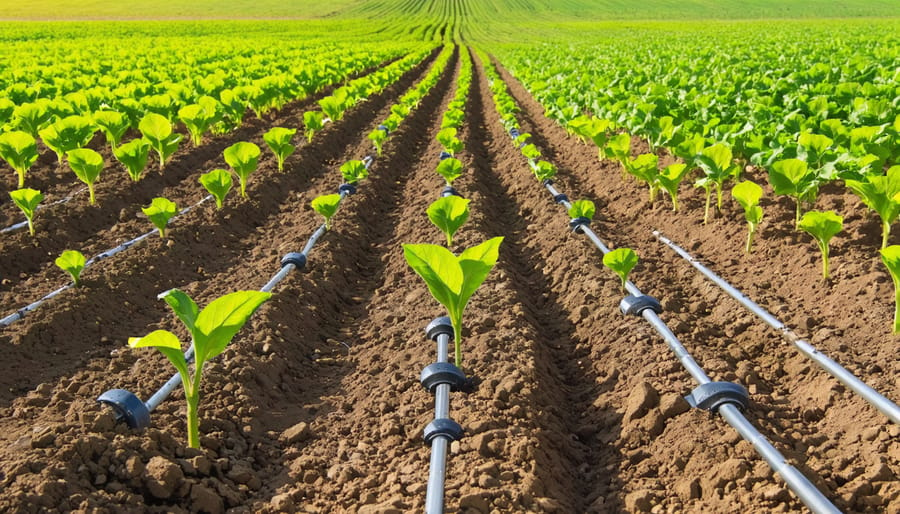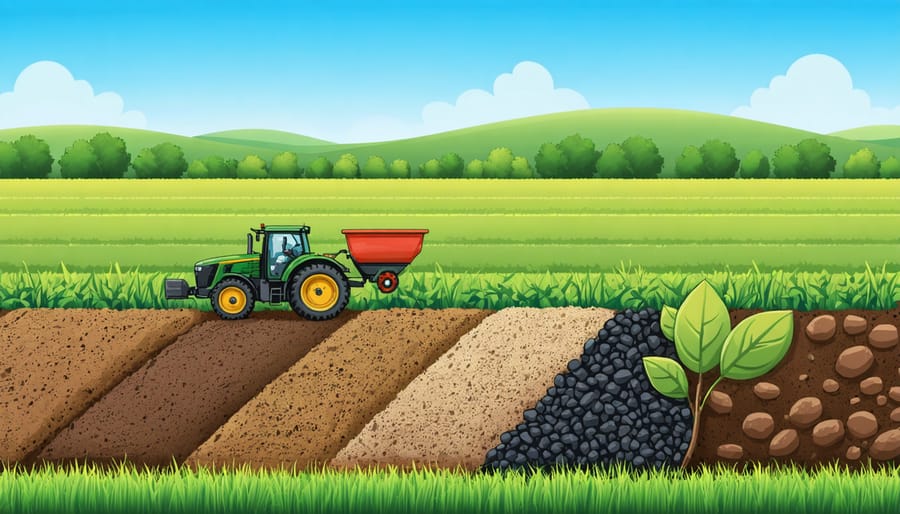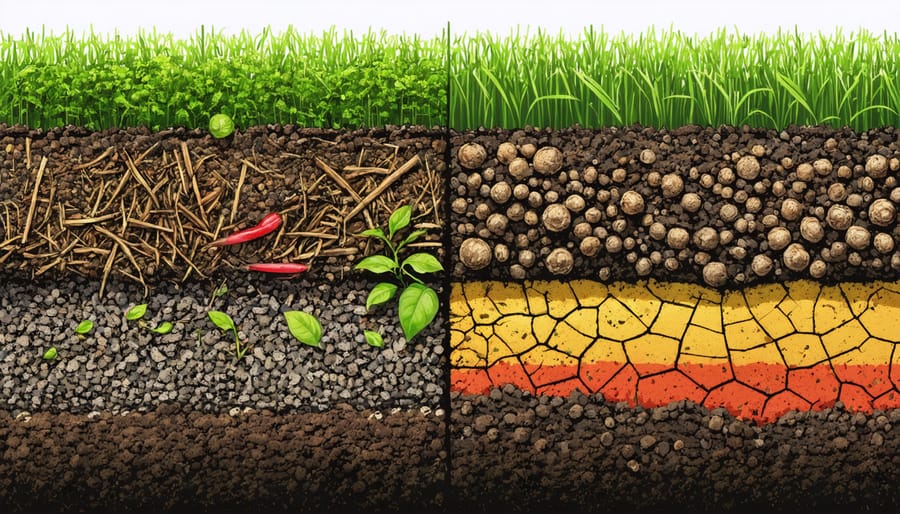In the face of increasingly unpredictable weather patterns across Alberta’s agricultural landscape, sustainable drainage systems (SuDS) have emerged as a critical solution for modern farm water management. These innovative systems work with nature, not against it, to capture, clean, and responsibly release water across farmland while enhancing soil health and protecting local watersheds.
By combining traditional agricultural knowledge with cutting-edge water management techniques, SuDS offer Canadian farmers a practical pathway to resilience. From simple swales and retention ponds to sophisticated bioretention systems, these solutions help manage excess rainfall, reduce flooding risks, and maintain consistent crop yields even during challenging seasons.
Recent data from Alberta’s agricultural districts shows that farms implementing SuDS have reduced water-related crop losses by up to 40% while improving groundwater quality and supporting local biodiversity. For a region that experiences both intense spring melts and summer droughts, these systems provide year-round benefits that extend far beyond basic drainage, creating a more sustainable and productive agricultural future for Prairie farmers.
This practical approach to water management represents not just an environmental choice, but a smart business decision for modern Canadian agriculture, offering both immediate returns and long-term sustainability benefits.
Why Traditional Drainage Systems Fall Short in Alberta
Climate Change Impact on Farm Drainage
Recent climate change impacts on agriculture have significantly altered traditional drainage requirements across Alberta’s farmlands. Our region now experiences more frequent intense rainfall events, with some areas receiving up to 100mm of precipitation within 24 hours, while also facing extended dry periods. These extreme weather patterns challenge conventional drainage systems and demand adaptive solutions.
Farmers are observing faster snow melts in spring, creating sudden water surges that can overwhelm existing drainage infrastructure. Summer storms have become more intense and unpredictable, leading to increased soil erosion and nutrient loss when drainage systems can’t handle the volume. Additionally, longer dry spells between rainfall events mean drainage systems must now be designed to better retain moisture when needed.
To address these challenges, drainage systems need greater capacity for peak flows while maintaining the ability to conserve water during dry periods. This dual functionality has become essential for maintaining productive farmland in our changing climate, making sustainable drainage solutions more crucial than ever for Alberta’s agricultural community.
The Hidden Costs of Poor Drainage
Poor drainage systems can significantly impact both your farm’s bottom line and the environment. On average, Alberta farmers lose between $50-100 per hectare annually due to waterlogged fields and reduced crop yields. These losses compound when considering long-term soil degradation, which can take years and substantial investment to reverse.
Beyond immediate crop damage, inadequate drainage leads to increased equipment wear and tear, as machinery struggles through waterlogged areas. This often results in higher maintenance costs and shortened equipment lifespan. Many farmers report spending 15-20% more on equipment repairs in poorly drained fields.
The environmental toll is equally concerning. Excess water in fields can lead to nutrient leaching, where valuable fertilizers wash away into local water systems. This not only wastes money but also contributes to water quality issues in our communities. Standing water also creates ideal conditions for soil erosion and the growth of unwanted vegetation, which requires additional herbicide applications and field maintenance.
Most concerning is the long-term impact on soil health. Poor drainage can lead to soil compaction and reduced organic matter content, affecting your land’s productivity for generations to come.
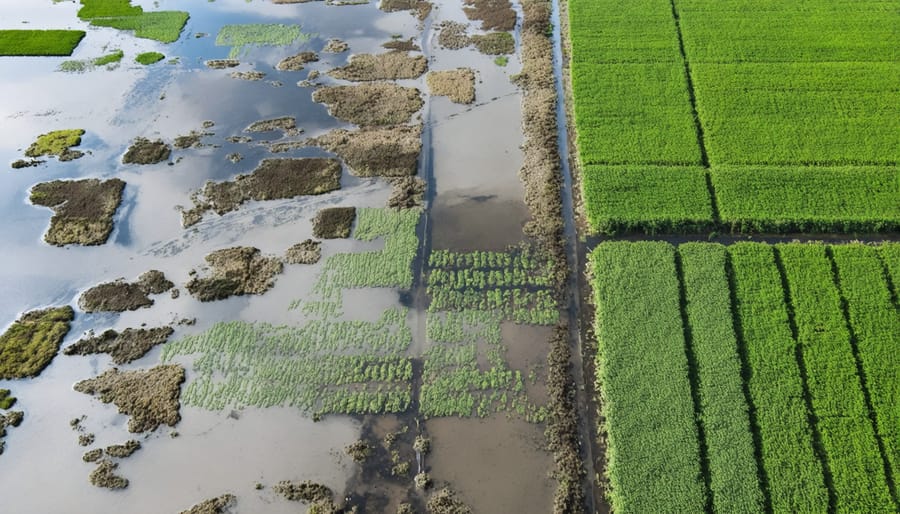
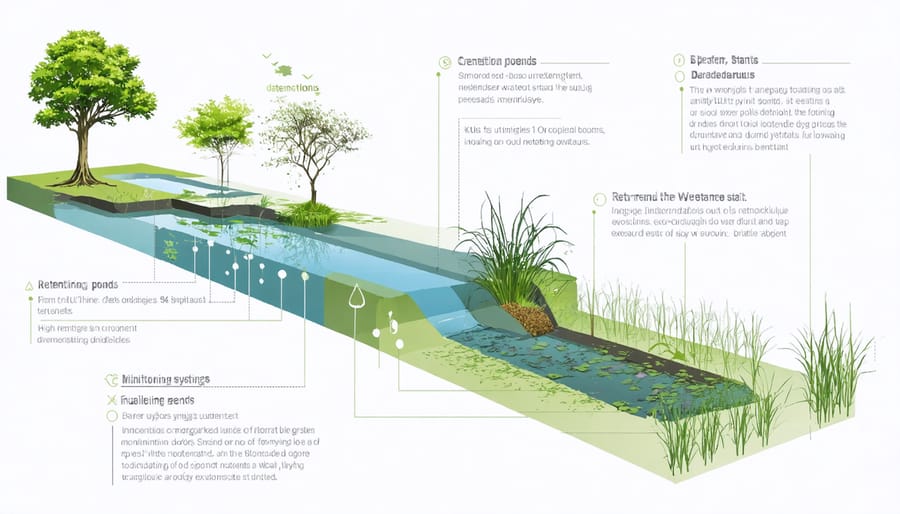
Components of a Sustainable Farm Drainage System
Natural Water Retention Features
Natural water retention features play a vital role in sustainable drainage systems across Alberta’s agricultural landscape. These features work with the land’s natural topography to manage water flow while supporting biodiversity and soil health. Understanding these wetland management benefits can help farmers make informed decisions about implementing these systems on their properties.
Wetlands act as natural sponges, storing excess water during heavy rainfall and slowly releasing it during drier periods. In Alberta, many farmers have found success by preserving or restoring natural wetlands, which can store up to 2,500 cubic metres of water per hectare. These areas also filter pollutants and provide essential habitat for beneficial insects and wildlife.
Buffer strips, typically 5-15 metres wide, consist of permanent vegetation along waterways or field edges. These strips slow water movement, trap sediments, and reduce erosion. Many Alberta farmers incorporate native grasses and shrubs in their buffer strips, which require minimal maintenance while providing additional benefits like wind protection and wildlife corridors.
Retention ponds are designed to temporarily hold excess water during peak flow periods. These features can be naturally occurring or constructed, and when properly sized (typically 1-2% of the drainage area), they effectively manage runoff while creating opportunities for water storage during dry spells. Many farmers integrate these ponds into their irrigation systems, making them dual-purpose features that enhance farm resilience.
Smart Water Distribution Networks
In modern agriculture, efficient water distribution networks have become increasingly crucial for sustainable farming practices. Across Alberta, farmers are embracing smart water monitoring systems that integrate sensors, automated controls, and real-time data analysis to optimize water usage.
These innovative networks use soil moisture sensors placed strategically throughout fields to measure water content at various depths. Connected through wireless technology, these sensors communicate with a central control system, allowing farmers to make informed decisions about irrigation timing and volume. Many Alberta farmers report water savings of 30-40% after implementing these systems.
The technology includes flow meters, pressure sensors, and weather monitoring stations that work together to create a comprehensive picture of water distribution needs. Mobile apps enable farmers to monitor and adjust irrigation schedules remotely, saving time and resources. The systems can automatically respond to changing conditions, such as shutting off irrigation before or during rainfall.
Local success stories include the Henderson family farm near Lethbridge, which reduced water consumption by 35% in their first season using smart distribution technology. The system also helped them maintain consistent crop yields while reducing energy costs associated with pumping water.
For those considering implementation, many agricultural extension services offer guidance and support in selecting and installing appropriate smart water distribution solutions for specific farm conditions.
Implementation Success Story: The Thompson Farm Project
Located just outside of Olds, Alberta, the Thompson family farm has become a shining example of sustainable drainage implementation in the Prairie region. In 2018, third-generation farmer Mark Thompson faced recurring challenges with spring flooding and summer drought that were significantly impacting his 800-hectare grain operation.
Working with local agricultural extension specialists, Thompson developed a comprehensive sustainable drainage plan that incorporated multiple water management strategies. The system included strategically placed bioswales along field margins, two constructed wetlands, and a network of controlled drainage channels that could be adjusted according to seasonal needs.
“The biggest game-changer was the ability to hold water when we need it and release it when we don’t,” explains Thompson. “During wet springs, we can now manage snowmelt more effectively, and in dry periods, we have reserve water for irrigation.”
The results have been remarkable. Since implementation in 2019, the Thompson farm has reported:
– 30% reduction in spring flooding incidents
– 25% decrease in irrigation needs during dry periods
– Improved soil health and reduced erosion
– Creation of wildlife habitat in constructed wetlands
– 15% increase in overall crop yields
The project cost approximately $75,000, with 40% covered through provincial agricultural grants. Thompson estimates the system paid for itself within three years through improved yields and reduced water management costs.
The success has inspired neighbouring farms to implement similar systems, creating a network of sustainable drainage practices across the region. The local conservation authority now uses the Thompson farm as a demonstration site for educational workshops and farmer field days.
“What started as a solution to our water problems has become something much bigger,” Thompson reflects. “We’re not just improving our farm’s productivity; we’re contributing to the long-term sustainability of agriculture in Alberta.”
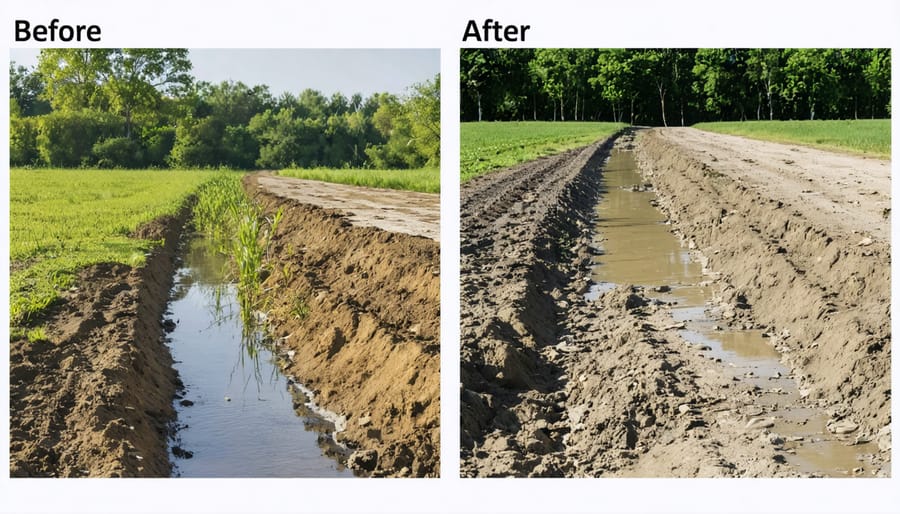
Practical Steps to Upgrade Your Farm’s Drainage
Assessment and Planning
Before implementing any changes to your drainage system, conducting a thorough assessment of your current setup is essential. Start by mapping your property’s natural water flow patterns during both dry and wet seasons. Document areas prone to flooding, erosion, or poor drainage, and note existing drainage infrastructure.
Consider consulting local agricultural extension services or certified drainage specialists who understand Alberta’s unique climate and soil conditions. They can help evaluate soil composition, slope gradients, and water table levels – crucial factors in designing effective water-saving strategies.
Create a detailed implementation plan that includes:
– Seasonal maintenance schedules
– Budget considerations for materials and labour
– Timeline for phased improvements
– Environmental impact assessments
– Required permits and regulations compliance
Remember to factor in extreme weather events common to Alberta, such as spring runoff and summer storms. Your plan should be flexible enough to adapt to changing climate patterns while maintaining system efficiency throughout the year.
Available Support and Resources
Alberta farmers can access numerous support channels for implementing sustainable drainage systems. The Environmental Farm Plan (EFP) program offers funding up to $50,000 for qualified projects, while the Canadian Agricultural Partnership (CAP) provides technical assistance and financial support for water management initiatives. Local Agricultural Service Boards offer free consultations and can connect farmers with drainage specialists.
The Alberta Farm Water Supply Program assists with planning and implementing water management solutions, including cost-sharing opportunities. Regional watershed stewardship groups provide valuable networking and knowledge-sharing platforms. For hands-on guidance, Agriculture and Agri-Food Canada maintains demonstration sites across Alberta where farmers can observe successful sustainable drainage systems in action.
Contact your local agricultural fieldman or visit your nearest Agriculture Service Centre to explore these resources and begin your sustainable drainage journey.
Sustainable drainage systems represent a vital investment in the future of Canadian agriculture, offering multiple benefits that extend far beyond simple water management. By implementing these systems, Alberta farmers have consistently reported improved crop yields, enhanced soil health, and significant reductions in flooding and erosion issues. The economic advantages are clear, with many producers seeing returns on their investment through reduced maintenance costs and increased land productivity.
As our climate continues to change, the importance of responsible water management cannot be overstated. Sustainable drainage solutions provide the resilience our agricultural communities need while supporting environmental stewardship. The success stories from farms across Alberta demonstrate that these systems are not just theoretical concepts but practical, proven solutions that work in our unique Canadian context.
Taking action towards implementing sustainable drainage doesn’t have to be overwhelming. Start small, connect with local agricultural extension services, and learn from neighbouring farms that have already adopted these practices. Remember, every step toward better water management contributes to the broader goal of sustainable agriculture.
By working together as a farming community, sharing experiences, and supporting one another in adopting sustainable drainage practices, we can ensure the long-term viability of our agricultural lands while protecting our precious water resources for future generations. The time to act is now – your farm’s future prosperity may depend on it.

